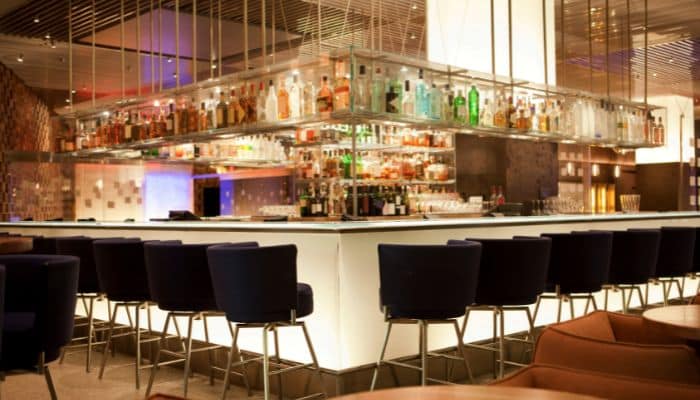Overcoming 7 Safety Challenges in Modern Bars
Safety is one of the key ingredients to successful bar ownership. Thinking about the well-being of your guests and employees ticks all the boxes to be profitable — excellent service, happy staff, good branding and compliance.
Whether you plan to open a bar or want to know how to minimize the risks at your business, here are seven safety challenges to keep in mind.
Obstructed Pathways
Cluttered pathways are a significant cause for concern in crowded establishments that serve hot food and bottled beverages. In dim lighting, hindrances on the floor become more dangerous tripping hazards — like chairs and equipment cables. In the kitchen, stockroom and other staff-only areas with adequate lighting, cookware, cardboard boxes and empty bottles are some of the most common causes of obstruction.
Although it’s challenging to keep all routes clear, especially during your busiest hours, you can prevent them by having a system of organizing things. Think of a proper way of fastening your cords, hiding them out of view and arranging empty chairs accordingly and quickly to keep your guests and employees safe.
Your bar has dedicated space for supplies, kitchenware and trash, so train your team to develop a habit of putting items in their proper places. Make it a strict policy to disallow anyone from placing anything in walking areas to prevent injury and property damage due to trips and falls.
Slippery Floors
Spills are a fact of life in restaurants and watering holes such as beer gardens. Since they’re bound to happen, you should have mops ready when they do. Here are the best practices for dealing with spillage:
- Clean up the spill ASAP.
- Dry the area as much as possible.
- Place safety signs in a prominent location to warn passersby about the wet floor.
- Arrange them in a triangle so they’re visible from all directions.
Have separate mops for dining and kitchen areas. The latter is prone to grease, so its cleaning toolset should include a degreasing detergent for removing oily residue.
To ensure your mops are ready when you need them, do this:
- Clean their heads after use.
- Drain excess water using a mechanical wringer.
- Wash them regularly with a non-bleach cleaner.
- Air-dry them or put them in a dryer without using a fabric softener.
- Store them with their head up instead of in the bucker or on the ground.
Insufficient Tools
Every safety-conscious cocktail bar or pub owner invests in proper equipment to help their employees do their jobs better and prevent accidents. Simple tools like jiggers and Hawthorne strainers will significantly reduce the chances of drink spillage. More sophisticated ones — like ergonomic keg lifters — can save lives. Full beer kegs can be heavier than 160 pounds, which can cause overexertion and repetitive strain injury to your employees who handle them manually.
Loud Sounds
Noise pollution is synonymous with nightclubs and live music bars. Although decreasing the music volume in a place where people go to dance and party may be out of the question, providing your employees with earplugs will help prevent them from experiencing hearing loss. When choosing hearing protectors, targeting to reduce noise exposure to 70 to 85 decibels will allow wearers to speak with others clearly.
Contaminated Perishables
Improper food hygiene can lead to spoilage. To keep your perishable items safe for consumption, remember the following factors:
- Cleanliness. Disinfect and sanitize every surface and piece of equipment that comes into contact with contamination-susceptible foods — like raw meat, dairy, vegetables, fruit, water and juices.
- Storage. Keep all food containers in the fridge covered at all times. Bar employees tend to leave milk, cream, cocktail and milkshake syrups and juices out after opening, so kick this undesirable habit soonest. Store dry supplies in places safe from water sources. Take note of expiration dates and refrigeration labels to keep your inventory fresh.
- Temperature control. Beware of the danger zone — hot should be at or above 140 degrees Fahrenheit and cold food should be at or below 40 degrees Fahrenheit. Leaving food out of refrigeration for more than two hours may lead to spoilage. This window is down to one hour for tiki bars whose room temperature can go above 90 degrees Fahrenheit.
- Handling. Use clean knives and cutting boards when preparing food — even items considered immune to contamination.
- Personal hygiene. Ensure your employees regularly clean their hands — especially when touching countertops, dirty cloths and trash bins.
Unchecked Brawls
If you run a sports bar or a club where guests liquor up to engage in emotionally charged experiences, hire enough security personnel who can address skirmishes and scuffles. Nipping these situations in the bud can keep your other patrons safe and your property in one piece.
Invest in high-quality surveillance cameras, too. Place them strategically so you can monitor as much area as possible. Video surveillance can help deter fights because people know you can capture their behaviors on tape.
Undertrained Employees
Your efforts will bear fruit only when you train your staff well. Onboard your new hires to familiarize them with your safety policies and retrain all team members regularly to remind them of the safety challenges prone in your establishment.
Do These Safety Challenges Resonate With You?
Certain bars may face a unique set of safety challenges. Regardless of the hazards you deal with, do everything to overcome them without cutting corners to enjoy long-term success in your business.



Comments are closed.